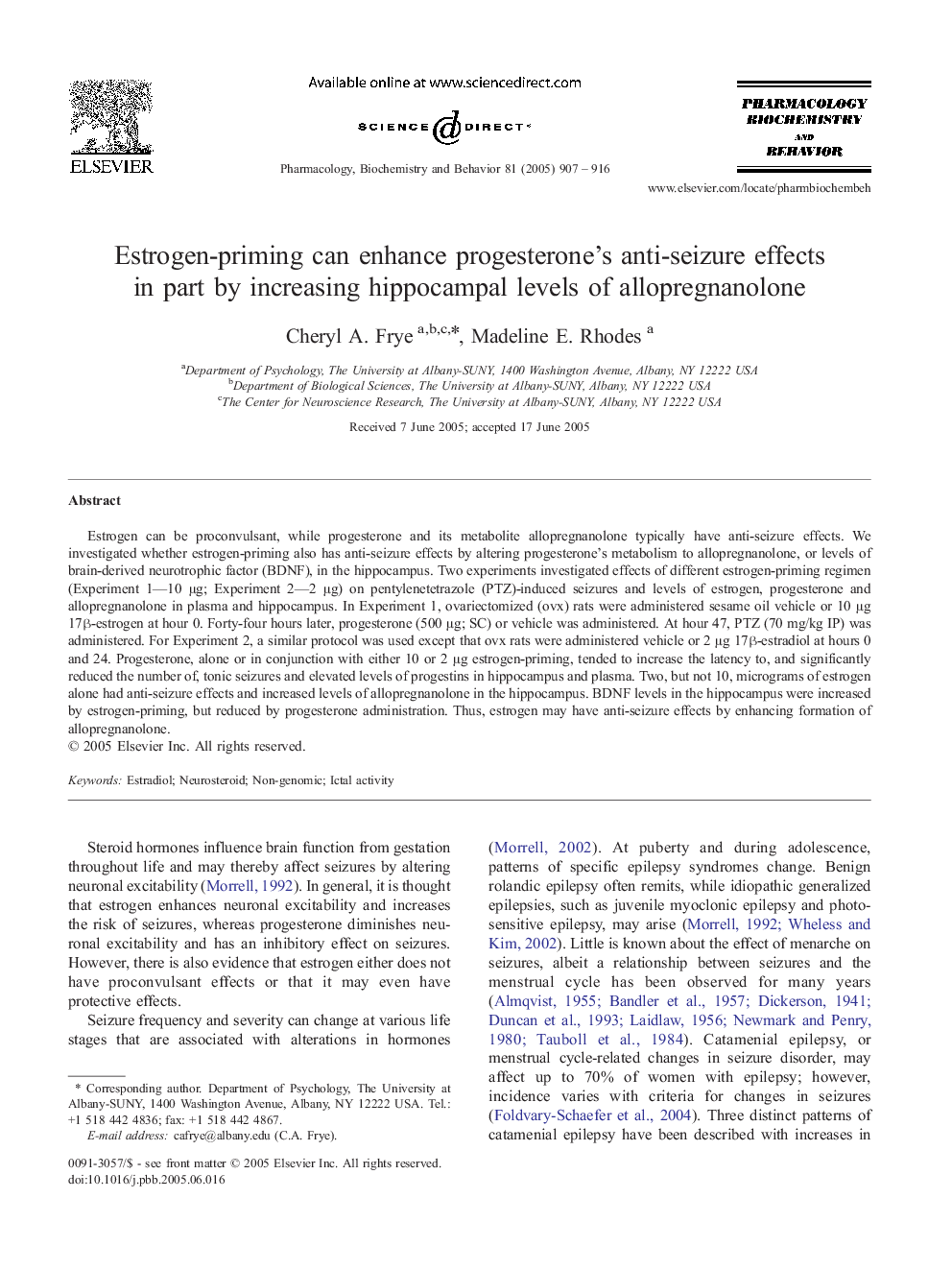| Article ID | Journal | Published Year | Pages | File Type |
|---|---|---|---|---|
| 10838564 | Pharmacology Biochemistry and Behavior | 2005 | 10 Pages |
Abstract
Estrogen can be proconvulsant, while progesterone and its metabolite allopregnanolone typically have anti-seizure effects. We investigated whether estrogen-priming also has anti-seizure effects by altering progesterone's metabolism to allopregnanolone, or levels of brain-derived neurotrophic factor (BDNF), in the hippocampus. Two experiments investigated effects of different estrogen-priming regimen (Experiment 1-10 μg; Experiment 2-2 μg) on pentylenetetrazole (PTZ)-induced seizures and levels of estrogen, progesterone and allopregnanolone in plasma and hippocampus. In Experiment 1, ovariectomized (ovx) rats were administered sesame oil vehicle or 10 μg 17β-estrogen at hour 0. Forty-four hours later, progesterone (500 μg; SC) or vehicle was administered. At hour 47, PTZ (70 mg/kg IP) was administered. For Experiment 2, a similar protocol was used except that ovx rats were administered vehicle or 2 μg 17β-estradiol at hours 0 and 24. Progesterone, alone or in conjunction with either 10 or 2 μg estrogen-priming, tended to increase the latency to, and significantly reduced the number of, tonic seizures and elevated levels of progestins in hippocampus and plasma. Two, but not 10, micrograms of estrogen alone had anti-seizure effects and increased levels of allopregnanolone in the hippocampus. BDNF levels in the hippocampus were increased by estrogen-priming, but reduced by progesterone administration. Thus, estrogen may have anti-seizure effects by enhancing formation of allopregnanolone.
Related Topics
Life Sciences
Biochemistry, Genetics and Molecular Biology
Biochemistry
Authors
Cheryl A. Frye, Madeline E. Rhodes,
